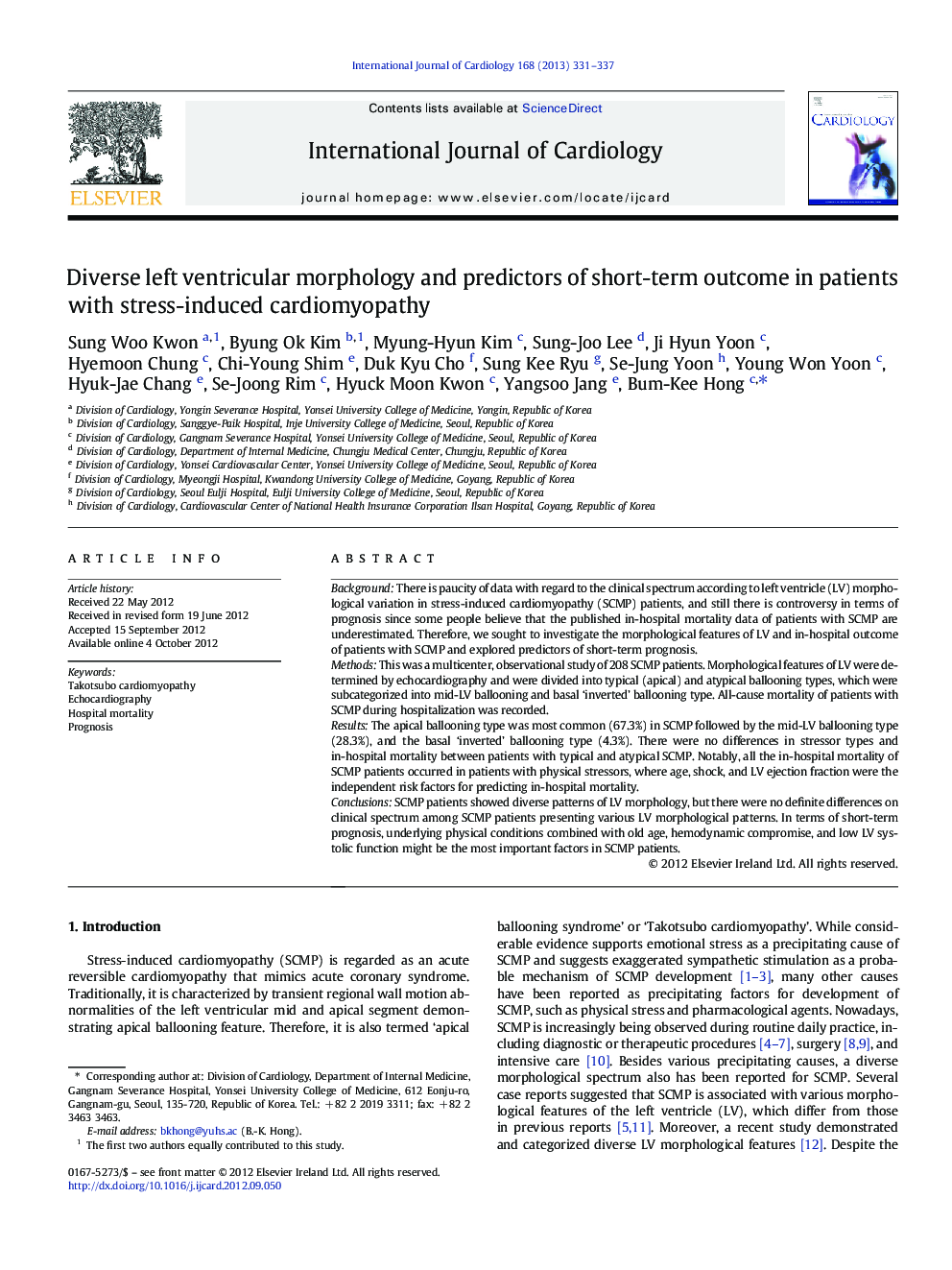| Article ID | Journal | Published Year | Pages | File Type |
|---|---|---|---|---|
| 5976673 | International Journal of Cardiology | 2013 | 7 Pages |
BackgroundThere is paucity of data with regard to the clinical spectrum according to left ventricle (LV) morphological variation in stress-induced cardiomyopathy (SCMP) patients, and still there is controversy in terms of prognosis since some people believe that the published in-hospital mortality data of patients with SCMP are underestimated. Therefore, we sought to investigate the morphological features of LV and in-hospital outcome of patients with SCMP and explored predictors of short-term prognosis.MethodsThis was a multicenter, observational study of 208 SCMP patients. Morphological features of LV were determined by echocardiography and were divided into typical (apical) and atypical ballooning types, which were subcategorized into mid-LV ballooning and basal 'inverted' ballooning type. All-cause mortality of patients with SCMP during hospitalization was recorded.ResultsThe apical ballooning type was most common (67.3%) in SCMP followed by the mid-LV ballooning type (28.3%), and the basal 'inverted' ballooning type (4.3%). There were no differences in stressor types and in-hospital mortality between patients with typical and atypical SCMP. Notably, all the in-hospital mortality of SCMP patients occurred in patients with physical stressors, where age, shock, and LV ejection fraction were the independent risk factors for predicting in-hospital mortality.ConclusionsSCMP patients showed diverse patterns of LV morphology, but there were no definite differences on clinical spectrum among SCMP patients presenting various LV morphological patterns. In terms of short-term prognosis, underlying physical conditions combined with old age, hemodynamic compromise, and low LV systolic function might be the most important factors in SCMP patients.
